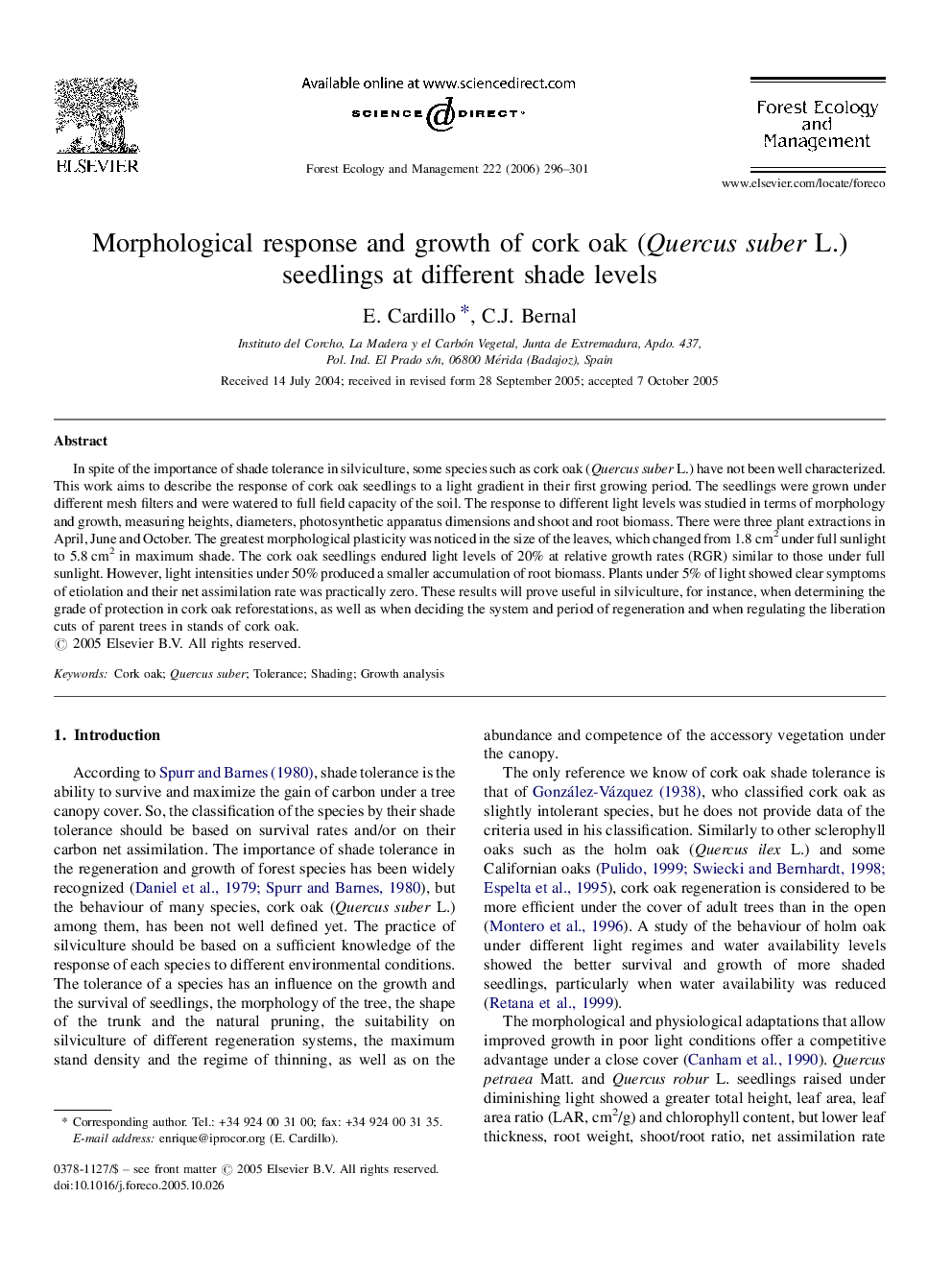| Article ID | Journal | Published Year | Pages | File Type |
|---|---|---|---|---|
| 90720 | Forest Ecology and Management | 2006 | 6 Pages |
In spite of the importance of shade tolerance in silviculture, some species such as cork oak (Quercus suber L.) have not been well characterized. This work aims to describe the response of cork oak seedlings to a light gradient in their first growing period. The seedlings were grown under different mesh filters and were watered to full field capacity of the soil. The response to different light levels was studied in terms of morphology and growth, measuring heights, diameters, photosynthetic apparatus dimensions and shoot and root biomass. There were three plant extractions in April, June and October. The greatest morphological plasticity was noticed in the size of the leaves, which changed from 1.8 cm2 under full sunlight to 5.8 cm2 in maximum shade. The cork oak seedlings endured light levels of 20% at relative growth rates (RGR) similar to those under full sunlight. However, light intensities under 50% produced a smaller accumulation of root biomass. Plants under 5% of light showed clear symptoms of etiolation and their net assimilation rate was practically zero. These results will prove useful in silviculture, for instance, when determining the grade of protection in cork oak reforestations, as well as when deciding the system and period of regeneration and when regulating the liberation cuts of parent trees in stands of cork oak.
